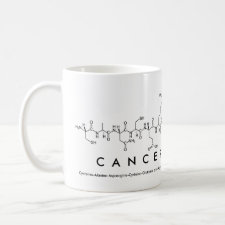
Authors: Mbukwa EA, Msagati TAM, Mamba BB
Article Title: Preparation of guanidinium terminus-molecularly imprinted polymers for selective recognition and solid-phase extraction (SPE) of [arginine]-microcystins.
Publication date: 2013
Journal: Analytical and Bioanalytical Chemistry
Volume: 405
Issue: (12)
Page numbers: 4253-4267.
DOI: 10.1007/s00216-013-6791-7
Abstract: About 70 % of microcystin (MC) congeners reported in literature consist of l-arginine amino acid (R) with its guanidinium terminal extending out of the cyclic moiety of these MCs. Molecularly imprinted polymer (MIP) bearing guanidinium terminus cavities was successfully synthesised using l-arginine as a template. Non-imprinted polymer (NIP; without template) was also synthesised for control purposes. The surface area, total pore volume and average pore diameter of MIP and NIP were 267.13 m2/g, 0.63 cm3/g and 88.39 Å; 249.39 m2/g; 0.54 cm3/g and 87.14 Å, respectively. The polymers were investigated for selective recognition and extraction of [arginine]-MCs in water using solid-phase extraction/liquid chromatography-electrospray ionisation-mass spectrometry (SPE/LC-ESI-MS) method. Representative model standard solutions (0.5 - 10.0 μg/L) of MC-LR and MC-LY were spiked in distilled water, recovered by SPE and quantified by LC-ESI-MS. In this study, Oasis Waters™ HLB cartridges served as positive control SPE sorbents. The MIP recognised MC-LR with high recoveries (70.8 - 91.4 %; r2 = 0.9962) comparable to HLB cartridges (71.0 - 91.85 %; r2 = 0.9993), whereas the NIP did not recognise or retain MC-LR. Also, neither MIP nor NIP recognised or retained MC-LY. Extracts of environmental toxic Microcystis aeruginosa were subjected to SPE procedure employing MIP, NIP and HLB cartridges. Microcystin-LR, -YR, -RR, -WR, -(H4)YR and (D-Asp3, Dha7)MC-RR were extracted by MIP and HLB cartridges only as confirmed by LC-ESI-MS. This study demonstrated that the prepared MIP have potential applications for the removal in water and LC-ESI-MS identifications of MCs consisting the guanidinium moiety, i.e.[arginine]-MCs, and in particular targeting commonly encountered toxic congeners, MC-LR, -YR and -RR
Template and target information: l-arginine, microcystins, [arginine]-microcystins, microcystin-LR, microcystin-YR, microcystin-RR
Author keywords: Guanidinium terminus, MIP, SPE, selective recognition, [arginine]-Microcystins



Join the Society for Molecular Imprinting

New items RSS feed
Sign-up for e-mail updates:
Choose between receiving an occasional newsletter or more frequent e-mail alerts.
Click here to go to the sign-up page.
Is your name elemental or peptidic? Enter your name and find out by clicking either of the buttons below!
Other products you may like:
 MIPdatabase
MIPdatabase









